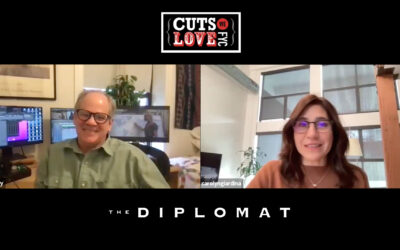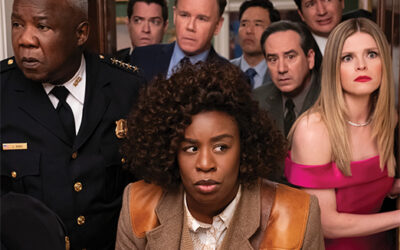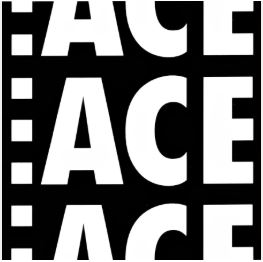February 13, 2021


Nomadland rediscovers a community of transient Americans who have been airbrushed off the map and almost off the grid. What attracted filmmaker Chloé Zhao to the story this group of mainly pensioners have found peace and humanity in going back to living off the land.
Zhao’s previous films, Songs My Brothers Taught Me and The Rider have explored marginalized communities in a style which has fused documentary with fictional elements. In this case, Nomadland is inspired by Jessica Bruder’s nonfiction book Nomadland: Surviving America in the TwentyFirst Century. Zhao was introduced by Bruder to several of the people featured in the book, notably the travelers Swankie and Linda May and Bob Wells, a guru of RV living. She chose to frame these characters and a cast of other real-life drifters in a narrative which traces the journey (literal and metaphysical) of fictional character Fern, co-created with and played by Frances McDormand.
 “One of the main reasons I took on this project is that I always wanted to make a road movie,” Zhao explains. “In making my first two films going between New York and South Dakota I spent a lot of time living out of my Subaru and sleeping in campsites. When I read Jess’ book I realized the world of nomadic living is so expansive and colorful. Having experienced it myself, and in creating the character of Fern, what resonated with me was her ability to persevere and to find a sense of self in nature. Whilst she has a community to support her, she is able to find peace in solitude. I think that is a very strong message.”
“One of the main reasons I took on this project is that I always wanted to make a road movie,” Zhao explains. “In making my first two films going between New York and South Dakota I spent a lot of time living out of my Subaru and sleeping in campsites. When I read Jess’ book I realized the world of nomadic living is so expansive and colorful. Having experienced it myself, and in creating the character of Fern, what resonated with me was her ability to persevere and to find a sense of self in nature. Whilst she has a community to support her, she is able to find peace in solitude. I think that is a very strong message.”
As with her other features, Zhao is not only director but writer, producer and editor. Her films are extremely personal and driven by empathy for her subjects and their stories. At the same time, she worked with McDormand (also a producer) and co-star David Strathairn, who were equally committed to preserving the authenticity of the story.
“The philosophy of making this film is to bring real life into fiction. I get to tell a story that is something that I discover along the way, that might be bigger and more universal. My comfort zone is when I know the poetry of it.” She elaborates, “We live in a world where people like Swankie and Linda May are not usually put in the spotlight and having someone like Fran (Fern) listening to them demands that we listen as well. It doesn’t matter what they throw at her or what happens spontaneously off-script, she is able to be completely present and react and give them just enough to not to take over the scene. She is guiding them a little but at the same time keeping the narrative in the scene.”
Zhao intentionally rewrote the script to accommodate many individual improvised moments, though structurally and in terms of character arc the script didn’t alter from conception to execution. “A lot of the detail in each scene changed,” she says. “A lot of things happened spontaneously or things I wanted to happen, didn’t, just because of the nature of making a film this way.
I would watch dailies every night and I would write every night. I don’t stop writing the screenplay.” Conventionally, directors will bounce feedback about the shoot’s progress with their editor. In her three features to date, Zhao has preferred to be her own editor, or to bring an editor on board once she has made the first cut.
“I’ve always edited the first cut of my films and after the first cut I bring on an editor and we work on two Avid stations exchanging ideas, refining the material. It was through this editing process on Songs that I learned that you gotta have a script. Otherwise you are missing the beats between the paragraphs and the treatment.” Zhao says that a large cast requires an especially-structured script. “I learned from The Rider how to focus on one character arc in a situation where the world around that character might be unpredictable. I learned how to capture those interesting little moments whilst keeping the emotional arc. Without that arc you lose the audience.”
 She explains that when she’s on set, decisions are based on “how I am editing in my head. I’m always thinking what else I need. Sometimes things happen on set and I instinctively make decisions. I can’t articulate why but it’s actually because I am subconsciously editing in my head. If I don’t work that through myself in the first cut, then I feel that something gets lost.
She explains that when she’s on set, decisions are based on “how I am editing in my head. I’m always thinking what else I need. Sometimes things happen on set and I instinctively make decisions. I can’t articulate why but it’s actually because I am subconsciously editing in my head. If I don’t work that through myself in the first cut, then I feel that something gets lost.
I did this the first time around [for Songs] and it worked and the second time [Rider] and it worked and then as we entered post on Nomadland the quarantine happened so I was like – let’s just do it! “If I felt it’s not working then I will seek help,” she adds. Her filmmaking is so immersed in the culture she is recording it demands a different approach. In this endeavor she collaborates on and off set with DP Joshua James Richards who shot both her previous features and is her creative sounding board.
“Because of the demand of making a film this way, I can’t just step away from my cast and go to an edit room,” she says. “I am with them all the time, on location in the middle of nowhere. So, at night I view dailies from a little drive attached to a laptop. “Josh is the person I collaborate with most across the whole process. Because I know the way he operates a camera, the way he shoots – I know how to edit that way. Because he’s seen how I work in the last two films, he knows what I am looking for.
“I am looking for minimal coverage. I will do multiple takes but never over four takes – it’s not fair on the non-professional actors. Then we’ll do the reverse with poor Fran who might get one take because we’re shooting in magic hour!” Zhao tended to spend most of each day prepping to start shooting around 4 p.m. for the hour or less of golden light presunset. “It is quite scary because I know we’re getting the bare minimum every time only because of the light,” she says. “We get just enough [to cover the scene] for me to cut. I feel like I have that confidence and so far it hasn’t completely failed me. There are definitely times when I’ve had to cheat [find workarounds] but when working on a small scale film like this I think it’s ok.”
The documentary style employed by Zhao and Richards enables them to capture and respond to moments spontaneously. For example, in an opening scene set at a massive Amazon warehouse, we meet a worker on lunch break who has a tattoo on her arm. It says ‘Home isn’t just a word. It is something that you carry within you.’ “I didn’t know she had it until I saw her,” Zhao says. “So, in that moment we had to get the right coverage to make the scene work. It was the same with Rider – I didn’t know what was going to happen. So, when we catch it on one side the decision is what other coverage do I need quickly to make this work in the edit.
It’s about getting the minimal [coverage] we need because we don’t have time in the moment to plan, rehearse or retake.” She was also aided by first assistant Bob Benedict. “He was super helpful and it was great to have an assistant editor for once,” in addition to having producer notes from Searchlight. “I don’t love being at the ‘friends and family’ screening but I would watch everyone’s reactions and take all the notes very seriously,” she says. “My instinct is to take the director’s hat off whenever there’s a problem and try to solve it myself. Sometimes
I need people close to me to rein me back and say, ‘You shouldn’t try to please everyone.’ I have people who know what kind of film I set out to make and who tell me if I’m pushing the film in a direction it doesn’t need to [go].” Zhao credits McDormand’s Buster Keaton-esque comic physicality as inspiration. “I could watch her make breakfast all day! We wanted to mine as much of that as we could because humor is when you can help make that character (Fern) more sympathetic and less sentimental.
“It was also very important for us to feel the passing of time. To feel a year in someone’s life you have to show real seasons. I know the American West pretty well because of the amount I have traveled there. In the low desert (Colorado) we went in winter when it’s cold, and in South Dakota (which experiences\ seven months of significant snowfall) we went in September.
The shoot was organized logistically between those extremes.” Throughout the scriptwriting and editing she reviewed Wong Kar-wai’s romantic drama Happy Together and Terrence Malick’s Tree of Life for their sense of place, the feeling for the passing of time “and the masterly way in which they incorporate random ideas and come out of the main storyline.
“Every time I watch [those films] I feel freer,” she says. “Can I have Fern walk through a beautiful sunset and the next\ second she is using a bucket (as a toilet) in a van? Can we pull that off in the edit? Yes, once I realized that the film doesn’t have to stay tonally tied to any genre.”
Featured in Content:
1st Quarter, 2021
ACE Board Message
FEATURES
Animation Showcase
The Midnight Sky
News of the World
One Night in Miami
Minari
Mank
Wonder Woman 1984
Nomadland
EDITOR’S CUT
ACE Holiday Party
STOCK FOOTAGE
Aspects of Editing
Tech Corner
Cuts We Love
Related Content
Cuts We Love: “Nobody Wants This”
"Nobody Wants This" Interview by Carolyn Giardina with Maura Corey, ACE, editor of Nobody Wants ThisMore...Explore Your Favorite TopicsEditFestTechnologyInterviewsMoviesNews A short excerpt from the ‘Virtual Glass of Wine’ British Film Editors interview series. David...
Cuts We Love: “The Diplomat”
"The Diplomat" Interview by Carolyn Giardina with Gary Levy, ACE, editor of The DiplomatMore...Explore Your Favorite TopicsEditFestTechnologyInterviewsMoviesNews A short excerpt from the ‘Virtual Glass of Wine’ British Film Editors interview series. David Fairhead BFE...
Explore Your Favorite Topics
EditFest
Technology
Interviews
Movies
News
A short excerpt from the ‘Virtual Glass of Wine’ British Film Editors interview series. David Fairhead BFE talks about the emotions working in the cutting room.
A short excerpt from the ‘Virtual Glass of Wine’ British Film Editors interview series. David Fairhead BFE talks about the emotions working in the cutting room.
A short excerpt from the ‘Virtual Glass of Wine’ British Film Editors interview series. David Fairhead BFE talks about the emotions working in the cutting room.
A short excerpt from the ‘Virtual Glass of Wine’ British Film Editors interview series. David Fairhead BFE talks about the emotions working in the cutting room.
CinemaEditorMag
Television
Editors On Editing
International
All Videos





